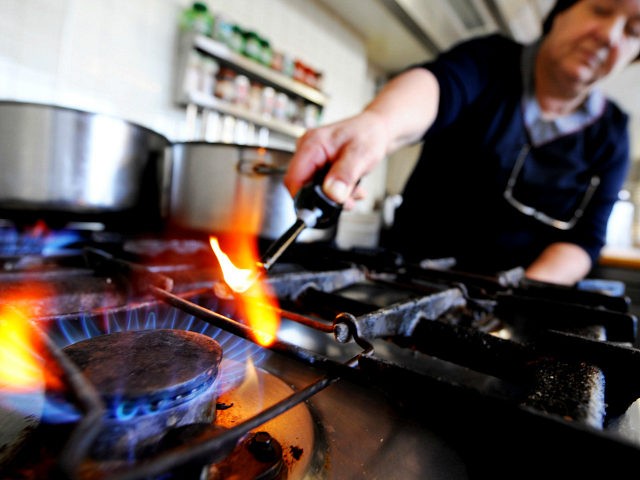California Cities Ban Gas Stove Hookups to Fight Global Warming, warm food is bad for the enviroment don't you know

4:13
Environmentalists in California are willing to let the state dictate how they cook in their own kitchens in an attempt to save the planet.
Thirteen cities and one county in California have put in place zoning codes encouraging or
requiring all-electric new construction, virtually banning builders from running natural gas lines into homes and apartments to fuel appliances, including stoves and ovens.
USA Today reported that people believe the move is necessary to fight climate change “with an eye toward creating fewer legacy gas hookups as the nation shifts to carbon-neutral energy sources.”
USA Today reported on the move “to fight climate change”:
For natural gas companies, it’s a threat to their existence. And for some cooks who love to prepare food with flame, it’s an unthinkable loss.Natural gas is a fossil fuel, mostly methane, and produces 33% of U.S. carbon dioxide emissions from electricity generation, according to the U.S. Energy Information Administration. Carbon dioxide is the primary greenhouse gas causing climate change.
“There’s no pathway to stabilizing the climate without phasing gas out of our homes and buildings,” Rachel Golden of the Sierra Club’s building electrification campaign, said. “This is a must-do for the climate and a livable planet.”
But the page linked to on the U.S. Energy Information Administration (EIA) website is referring, ironically, to CO2 emissions from the U.S. electric power sector by source for 2018. The new codes call for replacing gas with electricity.
The federal website reports on the benefits of using natural gas as an energy source:
Burning natural gas for energy results in fewer emissions of nearly all types of air pollutants and carbon dioxide (CO2) than burning coal or petroleum products to produce an equal amount of energy. About 117 pounds of carbon dioxide are produced per million British thermal units (MMBtu) equivalent of natural gas compared with more than 200 pounds of CO2 per MMBtu of coal and more than 160 pounds per MMBtu of distillate fuel oil. The clean burning properties of natural gas have contributed to increased natural gas use for electricity generation and as a transportation fuel for fleet vehicles in the United States.
“Probably the biggest stumbling block for most pondering an all-electric home is the prospect of not having a gas stove,” USA Today reported.
“It’s the only thing that people ever ask about,” Bruce Nilles, who directs the building electrification program of the Rocky Mountain Institute, a Colorado-based think tank that focuses on energy and resource efficiency, said in the USA Today report.
According to a 2017 kitchen study by the NPD Group, 35 percent of U.S. households have a gas stove, while 55 percent have electric.
“But the number of natural gas customers is also rising,” USA Today reported. “The American Gas Association, which represents more than 200 local energy companies, says an average of one new customer is added every minute.”
“That’s exactly the wrong direction,” Nilles said.
But the natural gas industry disagrees.
“The idea that denying access to natural gas in new homes is necessary to meet emissions reduction goals is false,” American Gas Association President and CEO Karen Harbert. “In fact, denying access to natural gas could make meeting emissions goals harder and more expensive.”
“They also say it’s more expensive to run an all-electric home,” USA Today reported. “A study by AGA released last year suggested that all-electric homes would pay $750 to $910 a year more for energy-related costs, as well as amortized appliance and upgrade costs.”
USA Today also pointed out that California is not the only place where people want more government regulation. New York, Hawaii, Colorado, and Maine have carbon-neutrality goals, and as many as 140 U.S. cities have similar plans.
KOO KOO
ReplyDeleteNothing beats snuggling up to a fireplace during the cold, winter months. It adds instant ambience to any home and can be a efficient form of heating if you choose the right fire or fireplace. Selected gas fires, wood burning stoves and multi-fuel stoves boast impressive heat outputs without costing a fortune to run thanks to major improvements on efficiency. Best gas Stoves in India
ReplyDelete